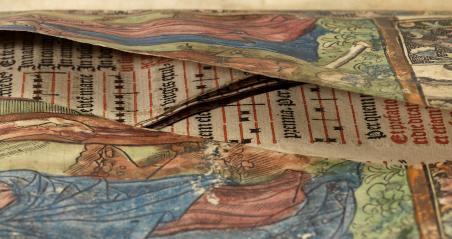
Contributors to Remembering the Reformation
This exhibition is a testament to the fruitfulness of collaborative work—not only among the members of our research team, but between our project and a number of research institutions and their staff.
This exhibition is the result of a collaboration with English Heritage at Audley End House, in Essex, where researchers from the University of Cambridge have been working in the rich historic library to begin to uncover its treasures. The discovery of two previously unknown books belonging to Sir Thomas Hoby (1530–1566), each bearing his distinctive signature and motto, set in motion a project the results of which can be viewed here.
Hoby was a courtier and translator, the second of these roles deriving from the extensive periods he spent travelling in continental Europe and immersing himself in the study of its languages. Hoby’s most famous work, his translation of Baldassare Castiglione’s Libro del cortegiano (Book of the Courtier) from its original Italian, is the focus of this exhibition.
Hoby’s books came to be at Audley End because of his connection with the Neville family, who owned a house in Berkshire called Billingbear. Hoby’s family seat was also in Berkshire, at Bisham Abbey, a property which he inherited on the death of his half-brother, Sir Philip Hoby, in 1558. At some point, Hoby’s books were moved the short distance from Bisham Abbey to Billingbear, and then, once its owner, Richard Aldworth Neville (1750–1825), second Lord Braybrooke, had inherited Audley End in 1802, they were taken across to Essex.
This exhibition has been curated by Dr Abigail Brundin and Dr Dunstan Roberts.
Another outcome of the collaboration between Cambridge University and English Heritage is an exhibition in the library at Audley End, which is running throughout the 2019 opening season. That exhibition, ‘Souvenirs of Italy: An English Family Abroad’, concentrates on a later story of travel and translation relating to the second Lord Braybrooke, who toured Italy in the 1770s.
Both exhibitions, online and physical, have the shared aim of using the treasures of a previously unexplored historic library to understand how travel, language learning and cultural translation contributed to the creation of English gentlemen in past centuries.